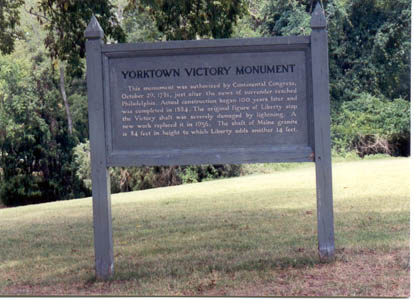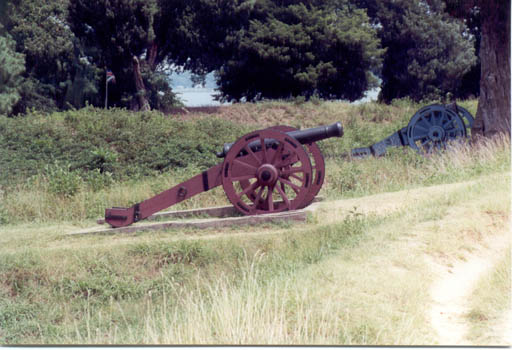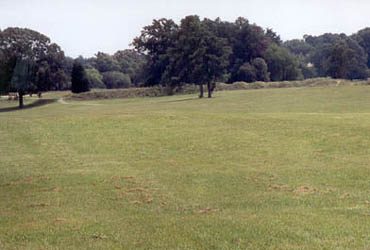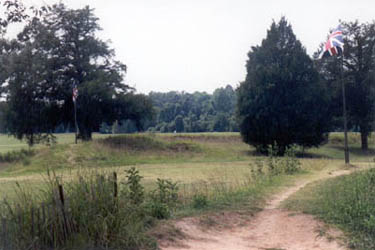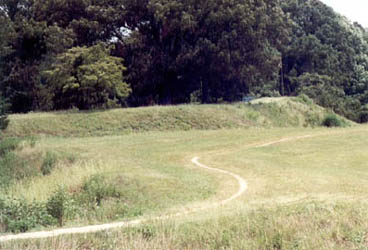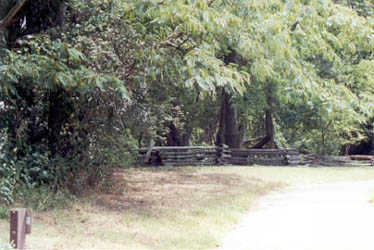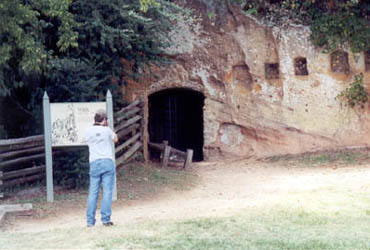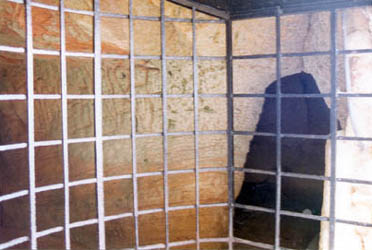|
Yorktown Battlefield The American Revolution
Yorktown Victory Monument: This monument was authorized by Continental Congress, October 29, 1781, just after the news of surrender reached Philadelphia. Actual construction began 100 years later and was completed in 1884. The original figure of Liberty atop the Victory shaft was severely damaged by lightning. A new work replaced it in 1956. The shaft of Maine granite is 84 feet in height to which Liberty adds another 14 feet. |
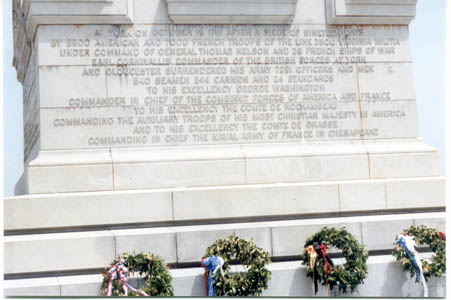 At York on October 19, 1781, after a siege of nineteen days by 5500 Americans and 7000 French troops of the line, 3500 Virginia Militia under command of General Thomas Nelson, and 36 French Ships of War, Earl Cornwallis, Commander of the British Forces at York and Gloucester, surrendered his Army: 7251 Officers and 840 seamen, 244 cannon and 24 standards, to his excellency George Washington, Commander in Chief of the combined forces of America and France, to his Excellency the Come de Rochambeau, commanding the auxiliary troops of his most Christian majesty in America, and to his Excellency the Comte de Grasse, Commanding in Chief the Naval Army of France in Chesapeake. |
